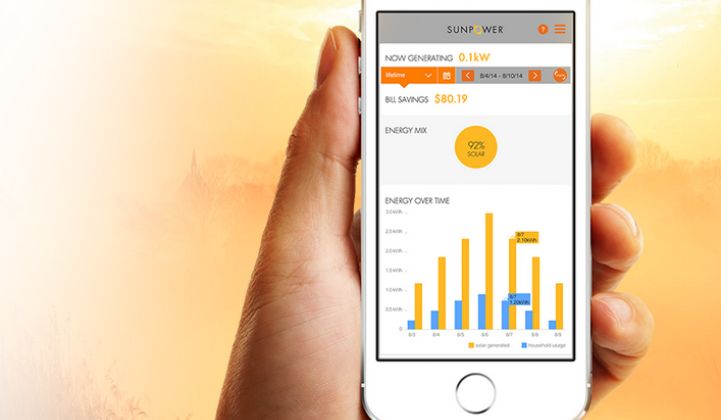Tendril, the Boulder, Colorado-based energy management software firm, has raised $20 million in growth equity from SunPower.
As part of the deal, SunPower will license Tendril’s energy services platform and integrate it with data coming from a customer’s solar array to offer customers a new set of energy management services.
Existing SunPower customers will see an expansion of offerings on their portal. It will now allow users to choose from options including saving more money, using more energy to better align with solar production, or a combination of the two.
The system will then offer advice on shifting usage, such as running a dishwasher or charging an electric vehicle when PV production is highest. In the future, a dishwasher or clothes dryer could automatically turn on when the right amount of energy is available.
In some ways, this move could be seen as a throwback to Tendril’s previous business model, when it was building a platform via which devices in the home could be operated with downstream controls.
There will also be an opportunity to upsell products and services, such as battery storage or a new refrigerator. That new fridge could also come with a utility rebate. For new customers, the energy platform will be used to assess each home's status and offer users different bundles, some including storage, based on whether they want to save the most money or even potentially go off-grid. (For more on the bundling trend, check out this year’s home energy management trends.)
But the platform is not looking to compete with the utility. Instead, Tendril can take the data from the software and feed it into the utility’s efficiency platform so that it gives the customer more accurate information through that portal. Adrian Tuck, CEO of Tendril, said that it could also help utilities identify customers who are best suited to install solar, or customers who could benefit from being part of community solar programs.
“Right now, you are just excluded from utility programs if you have solar,” said Tuck. “Your portal doesn’t usually work quite how it should.”
Unlike many competitors, Tendril takes a physics-based approach to disaggregation, instead of using regression models. The company uses more than 300 inputs, not including any utility data, and Tendril says it’s about 90 percent accurate when utility data is integrated.
SunPower and Tendril are not alone in merging the broader suite of home energy management with solar. Most of the leading downstream solar companies in the U.S. call themselves "energy service providers," rather than "solar installers." As batteries, electric vehicles, smart appliances and solar all merge in increasingly connected homes, there is an opportunity for cross-selling and value-add services that many companies are eager to cash in on.
"Consumers want even more flexibility to tailor their energy supply and usage to fit their lifestyles, beliefs and financial goals," Tom Werner, SunPower president and CEO, said in a statement.
Competitors such as SolarCity, Enphase Energy and Vivint Solar already have some form of energy management as part of their offerings. Vivint probably has the broadest bundling so far, offering its security and solar services, as well as internet. But it’s not just solar installers that are competing with each other. There are also service providers, from security to cable, that are trying to capture this market.
Tendril has been working with SunPower for the past eighteen months on this partnership. “The company we partnered with was an important choice for us,” said Tuck. “We needed someone who sees the utility as a friend and potential partner.”
“These worlds are merging,” said Ivo Steklac, general manager of residential and commercial energy solutions at SunPower. “It’s no longer a competition.” He pointed to the winners of Southern California Edison’s recent energy storage contracts, which included more than 100 megawatts of behind-the-meter batteries.
“The utility will move from a somewhat isolated role into one where they interface all sorts of different service providers,” said Tuck. “The first step is to bring all of [this data] together. Right now, that’s linking solar and utility data.”
***
Stay tuned for related upcoming GTM Research reports: Smart Energy in the Connected Home: Landscape, Distribution Channels, and Markets and The Future of Solar-Plus-Storage in the U.S.



